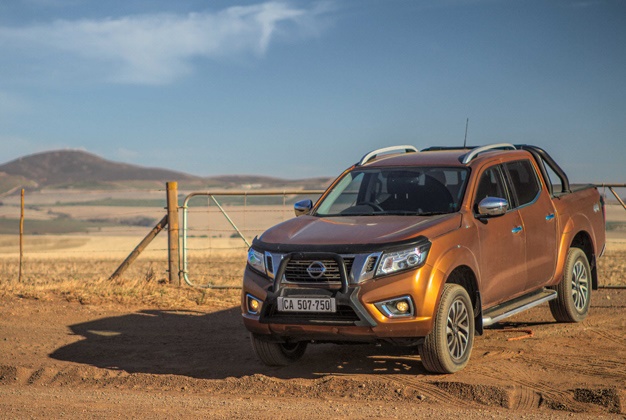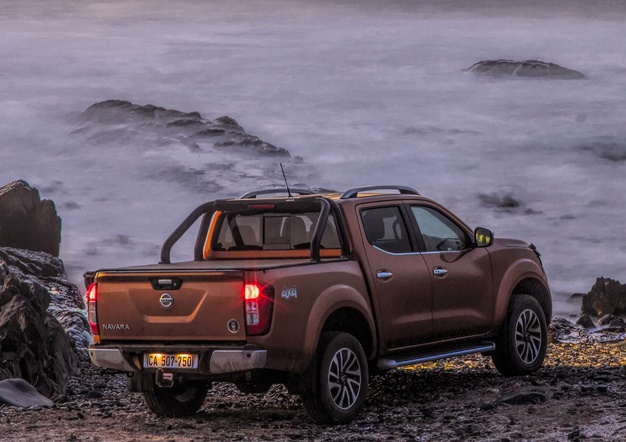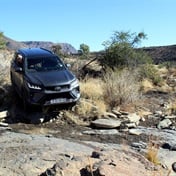Cape Town - Social media, and the internet in general, was completely taken with Mercedes-Benz’s X-Class following its global reveal in SA earlier in July. The original German auto brand has promised that its double-cab bakkie will revolutionise the segment.
The specifications are impressive but we don’t much of how it drives, having merely been offered a passenger ride. What we do know, is that its chassis is the same one Nissan engineered for its second-generation Navara – and that is a bakkie we have spent a fair bit more time with.
Next-gen Navara
It has been a tryingly long-time waiting, for the new Navara. South African Nissan bakkie fans, amongst the most loyal, had to endure a near one-year lag to the delivery of their Navaras – after other RHD markets, such as the UK and Australia, had already received their bakkies.
An evolution inside and out
Has it been worth the wait? I possess a shamefully underdeveloped sense of design and appreciation of anything apparently aesthetic – if it doesn’t have a racing number on it, I summarily ignore. The original Navara was a terrifically handsome bakkie, celebrated for its simple details and bold proportions. This new one is a touch rounder and if you forgive the faux-1980s ‘4x4’ sticker kit on each flank, behind the rear wheelarches and tailgate side shut line – it’s an attractive bakkie.
Inside it mirrors what VW was first to cleverly achieve with Amarok: if you want something approaching passenger car comfort, it helps to source switchgear and most of the cabin bits from a passenger car or SUV, instead of workhorse vehicles – which bakkies have always traditionally been.
This is what has made a difference for Amarok and in new Navara, there are X-Trail and Qashqai components all over the cabin, rendering all the ergonomic benefits you’d expect.
Those awful grey hard touch cabin plastics of the previous D40 Navara has been replaced with quality surfacing; and beyond the softer touch materials there’s all manner of infotainment synching and superior hip comfort for second-row passengers too. Seven years ago, you’d rather source a sleeping bag and some pillows, illegally stowing away in the loadbin, instead of having to travel in the second-row seating of a double-cab. These new ones, such as Navara? They’re arguably better for four-up travel.
So, it looks pretty and is a much better place to be inside, but what of new Navara’s fundamental bakkie attributes? Does it cruise gravel roads with aplomb? Can it go up and over stuff? Will you continuously risk dings each time you venture into an underground parking lot?
Gravel travel is a South African reality, which exists in speed and scale – unlike anywhere else. European and Japanese product planning people have always underestimated just how much gravel South Africans drive on – and how quickly. With Navara somebody was properly briefed – finally – and its chassis design heralds a massive breakthrough in high-speed stability courtesy of coils-sprung rear suspension.
Although it is not the first double-cab bakkie in South Africa to feature coil springs at all four wheels (Land Rover’s Defender 130 has had those for years), it is now the only one on sale – well at least until X-Class launches here next year.
You don’t require a mechanical engineering degree to realise why coils are better: if they’re the default rear-suspension design for all Dakar rally raid off-road racing bakkies, imagine what they can do for you for your family car double-can experience.
Coils require less terrain input to compress, meaning small bump absorption is superior – and if you drive a lot of gravel, you’ll know that those small corrugations are often the worst, overwhelming a leaf-sprung rear suspension, and initiating the onset of instability. With Navara, there is just a fantastically planted feel from the rear – it’s always tracking what the front wheels are doing and responding in collaboration, instead of the disjointed feeling you often have with leaf-sprung rear, struggling to cope.
Sophisticated suspension, robust ability
Beyond the ride quality and handling confidence, which is decidedly more SUV than traditional bakkie, Navara hasn’t compromised Navara’s workhorse ability. It can carry nearly 1t (961kg to be precise) and tow 3.5t, whilst there’s a proper low-range (geared to 1:44.6) and electronically lockable rear differential for absolute traction security when you have something really challenging in your way.
With 229mm of ground clearance and brilliantly calibrated four-wheel traction control, Navara 2.3D is credibly capable off-road. The only issue is that you can’t engage the rear differential lock in high-range, it only works in crawler gear mode – understandable for the most part, but if you are trying to scale a massive Namibian dune, it’s worth having the ability to run a locked rear axle in high-range, approaching three figure climbing speeds.
The chassis is a remarkably accomplished design and after spending time driving Navara across a diversity of terrain, it’s abundantly clear why Mercedes partnered with Nissan.
If you wish to table comparison, Navara settles very much in the middle of feature and output comparisons with its rivals. Option for the top-spec 2.3D LE auto you’ll benefit from an excellent drivetrain. It might be only 2.3-litres in capacity but the four-cylinder turbodiesel is good for 140kW and 450Nm, and those output numbers are converted to momentum by a very tidily configured seven-speed automatic transmission.
Achieving sub-10l/100km diesel consumption is entirely possible and with a direct-drive fifth gear, there’s no panicked hunting by the Navara’s drivetrain electronics when you’re wanting to overtake. True, Amarok has by far the best transmission of all double-cab bakkies, with its ZF eight-speed auto, but Navara’s seven-speeder is a close second – far superior to Hilux or Ranger’s six-speed autos. Then there’s the issue of agility. Despite its size, there’s a nimbleness to Navara’s handling, it never feels titanic in town or on the trail and that’s due some ingenious wheel packaging which yields a turning circle of only 12.4m – smaller (and therefore better) than either Ranger or Amarok.
Crossover-like cabin. Great off-road and gravel travel ability. Entirely liveable as a town-vehicle and considering its performance, never tragically heavy on fuel. Nissan has tested the patience of its immensely faithful D23/40 Navara owners, who have been clamouring to replace their double-cabs with a new model for way too long.
READ: 10 things you need to know about the Mercedes-Benz X-Class in SA
Those who have not switched allegiance to one of the rival double-cabs will have their patience richly rewarded with the new bakkie. Whether the X-Class chassis association buoys second-hand Navara prices in the fullness of time, that’s an interesting marketing and value dynamic we can only speculate on.
Specs
Nissan Navara 2.3D LE 4x4 AT DC
Price: R587 900
Engine: 2.3-litre four-cylinder turbodiesel
Power: 140kW @ 3750rpm
Torque: 450Nm @ 1500rpm
Drivetrain: seven-speed auto, low-range transfer case, rear differential lock
Weight: 1881kg
Wheels: 255/60/R18




 Publications
Publications
 Partners
Partners













